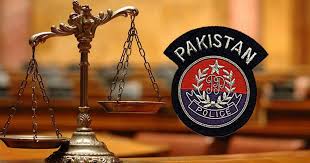By: Sukkena Afzal
Pakistani society is a very orthodox and conventional community that includes numerous hindrances for women. Be it for minor girls, teenagers, adolescents or senior citizens. This country also has widespread gender-based violence. In the majority of cases, ever since the beginning of a girl’s life, I.e., her birth, she is manipulated and persuaded to follow the usual route of a career in medicine, that too, only if she’s privileged enough to get an adequate education, otherwise, they’re deprived of this fundamental right too.
After a tedious journey of getting enrolled in a medical school, which is a plight in itself, and getting a degree in any field associated with medicine, they’re married off to serve their in-laws and kids for all their upcoming lives. I often wonder, when becoming a doctor is a difficult and stressful educational experience for anyone, one must get good grades and put in long hours of study. Why give all that up? Were all those decade-long efforts futile? Why do they eventually succumb to the social pressure of procreating and being a good wife and daughter-in-law? There is so much talent that goes to waste in this country. 51% of the population of this country comprise of women and most of them are either forced or convinced to stay home and raise families. It is an unfortunate amalgamation of state of affairs.
According to a press report, it asserts that 80-85 percent of Pakistan’s medical students are women. The ratio of female to male students stands at 70 percent female and 30 percent male at Dow Medical College in Karachi. Now the question is, does the fault lie within the individual student, who has enough commitment to the demanding medical education while single, but fluctuates in juggling them when the demands of in-laws and husbands and children are added to the amalgamation of liabilities? Is it the fault of the Pakistani middle-class culture that has placed value on professional education for girls, but only as a sort of dowry or to achieve a suitable “Rishta”? Or can this be blamed on deeply embedded patriarchy in the working world of a male-dominated nation; that barely tolerates these girls in the learning domains but is too vicious to allow them to practice without harassment and intimidation? It is indeed a multifaceted conundrum.
In a poor country like Pakistan, where basic healthcare is inaccessible to millions, female students take up already restricted resources. When these girls do not practice, they take away income-generating opportunities from others who would utilize them. The aspiration to become a doctor is as much, if not more motivated by aspirations to middle and upper-middle-class status; than to provide healthcare. This sole drive perishes the whole cause. This, itself, is another crisis on its own. According to a collaborative study conducted by Gallup Pakistan and PRIDE, an astonishing 35% of female medical doctors in Pakistan are currently unemployed. The survey showed that 104,974 female medical graduates reside in the country. Of the total, 68,209 are working at various private and state-owned medical facilities. According to Pakistan Medical and Dental Council (PMDC), Pakistan has produced about 200,000 doctors, ever since its inception in 1946, and “half of them are females.” The Bureau of Emigration & Overseas Employment data states that around 30,000 doctors have left Pakistan since 1970 and, on average, around 1,000 doctors settle abroad every year. One of the critical issues contributing to this dilemma is the reluctance of qualified female doctors to join the workforce. This stands as a perplexing situation where inevitable economic loss and wastage of a woman’s life are going parallel. It’s 2023 but sadly, rather unfortunately, our indecisiveness is still there. With ample crisis dawning upon us, this is one of them too.
The writer is an undergraduate student at Karachi University. She can be reached at [email protected]













